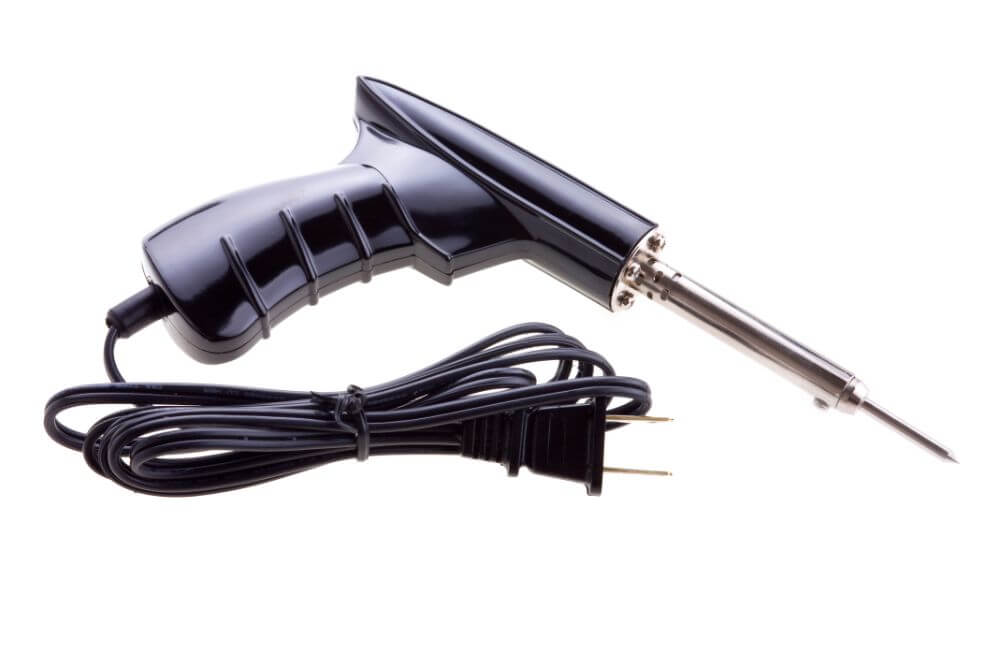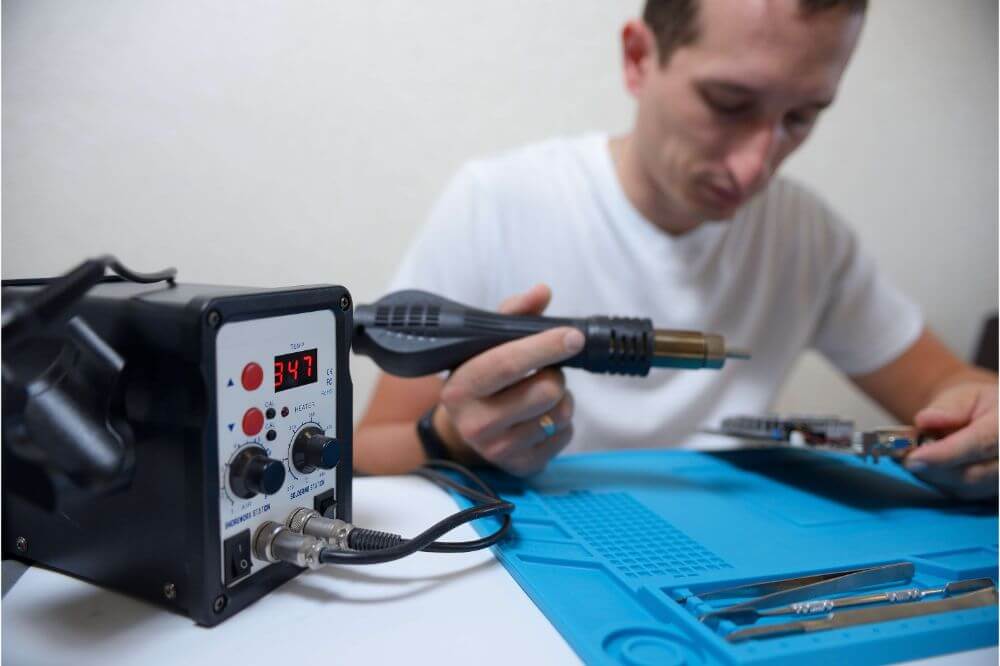Soldering is the process where the solder is melted by applying heat to the parts that are to be joined. After melting, a strong bond is created at the component to allow wetting.
Generally, there is no specific soldering iron temperature. It should be set according to the component and the solder. Using a small tip that has a 315 degree Celsius, it is enough to solder the joints without overheating.

Factors to consider when setting temperatures
To pump more heat into the wire and the plated hole, use 370 degrees. You can also consider changing the tip according to the temperature you need.
It is important to note that the melting point of some solders ranges from 190 to 230 degrees Celsius. And that of the tip is about 330 to 360 degrees.
It is however recommended that you set the soldering iron tip at 270 degrees, and slowly adjust upward accordingly. A hot iron, for example, will melt faster while a cooler one will require to be held for a longer period.
Cons of staring at very high temperatures:
- You might burn off the flux
- It might melt the insulating wires
- It can easily damage the components
- It drastically reduces the lifespan of the tip
- It quickly melts the lead
Despite the above risks, experts recommend higher temperatures. This is because, the solder needs to wet the surfaces, and that can only be achieved with high temperatures
Important considerations when using high temperatures
- When using considerable high temperatures, the solder melts faster, therefore, reducing the chances of ruining the component.
- If you are using solder alloy, ensure you the select temperature that suits all types
- Tip size should be large enough since it transfers heat faster. The size should be around the same size of the area being soldered
- Some components need different heat, for example, big capacitors will require more heat than smaller ones
- Always avoid touching components in other areas, ensure the tip is only around the area you are soldering
- To reduce the risk of component damage, always use flux. It will clear and clean the area you are soldering, when clean, it will reduce the time you will make the connection
The typical temperature of soldering iron should be heated between 500 to 650 degrees. This, therefore, means higher temperatures are safer than lower when soldering.
Higher temperatures allow the solder to melt the areas completely. The unique feature of most lead alloys is that it reaches up to 180 degrees.
The importance of temperature accuracy
One should keep checking the temperature to increase the life of the tip, and also avoid overheating. You should also ensure the temperature is correct to avoid soldering at low temperatures because of both cause problems.
- Low temperatures lead to poor heat transfer, which in return results in the poor quality of solder joints
- Overheating at high temperatures may lead to lifted lands, board damage, poor solder joints, erosion of the tip, and overheated solder.
How to maintain the correct temperature
Immediately you have started soldering, ensure you keep the working temperature low to avoid the flux burning. This may lead to poor quality solder joints.
In case, the solder does not melt fast enough, don’t be inclined to choose a higher temperature. Choose a larger tip that has a greater surface contact.
Experts advise you to choose a solder tip that is bigger since it has a better thermal transfer. This will enable you to:
- Increase the temperature exactly as you require
- Reduce the component damage
- Get quicker results in less time
- Work at lower temperatures
- Improve heat performance
The best temperature for soldering iron
Although temperatures for the tip is never the key component in soldering, it is advised that you should start at the lowest temperature
The most commonly used soldering irons range between 30 to 70 watts. The wattage of about 50W is very common in recent days because it provides enough heat for most soldering tasks on the circuit boards. After serious research, you will discover that soldering irons with 40 to 70 wattage are way much better.
In case one is having a difficult time getting the solder to melt, you are advised to increase the heat. On the other hand, knowing if the soldering iron is either too hot or it is at a low temperature is key. All you need to observe is whether the solder is taking longer than two seconds to melt.
That will mean you are working at a very low temperature, and you need to turn the heat up. You may be wondering why it is important to return the soldering iron to its stand whenever it is not in use. Well, it is for extra protection. In case the plastic flex touches the hot iron, there could be the risk of serious burns and electric shock.
How does one control the temperature of soldering iron during soldering? Research has shown that potentiometer VR1 is used in setting the temperature during soldering. The circuit box can be placed with the potentiometer fixed on one side, this is placed such that it is possible to have the knob to be controlled from outside and adjust the soldering iron temperature.
Cold solder joint
This is the joint where melting did not occur completely. It can easily be noticed due to how rough or lumpy the surface is. The solder melts at 360 degrees, therefore helping to avoid cold joints in the component.
Conclusion
To have enough heat during soldering iron, a 40 watt is more than enough depending on the size of the tip. That means if you use a large tip, you will transfer enough heat to the component. But if you use a smaller tip, there won’t be enough heat to melt the solder.
Check on the size of the tip, the length of the tip, and the amount of heat that can be transferred during soldering iron. The higher the temperature, the better the results, and the faster the melting process.


